Shatush coloring is a modern hair coloring technique, which is also called French highlighting. Photos before and after the shatush session clearly demonstrate all the advantages of the method.
Features of the shatush staining technique
The very word "shahtoosh" in translation from English means "goat down", or rather expensive wool of a special breed of goats, which is distinguished by its extraordinary softness.
The shatush dyeing method was invented by the Italian stylist Aldo Coppola, who owns a network of world famous beauty salons. At first, coloring was available only to celebrities and Hollywood actresses, which reflected belonging to the luxury, elite class.
The second name of the method is French highlighting. Shatush received it because of the special love of French women for this type of coloring. French women are renowned for their ability to look stylish in any situation, which is why they praised the technique for adding a touch of chic to the look.
The main feature of coloring the shatush is the effect of strands burnt out in the sun.
It is created thanks to a soft transition of tones from roots to tips with lightening of the latter. When dyeing, tint compositions are used that are close in shade to the natural hair color to give them a natural look. This method is called color stretching.
Who is coloring shatush suitable for?
Shatush is a universal coloring technique that will suit almost every woman. For young girls, coloring will add zest and emphasize natural beauty, and for older women it will add charm and elegance.
Dyeing looks good on long hair and shoulder-length haircuts, such as a bob or bob. The natural hair color using the shatush technique does not matter. There is a suitable color palette for each shade, which perfectly matches the natural hair color.
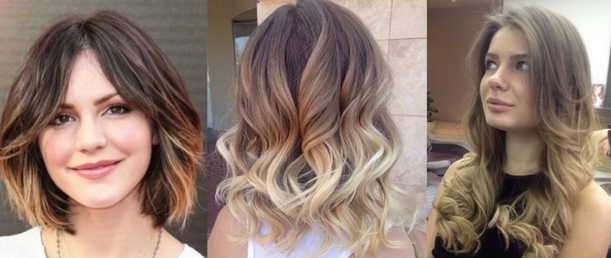
However, blondes with too light shade of hair are advised to choose a different coloring method, since with this color the result of the shatush may be invisible.

 Don't miss the most popular column article: Trendy hair colors this year. Photos and trends in hairdressing.
Don't miss the most popular column article: Trendy hair colors this year. Photos and trends in hairdressing.Factors influencing the choice of technique: length, structure, hair density
Despite the versatility of the technique, the quality of staining depends on several factors.
Hair length is one of them:
- Shatush looks most impressive on long hair, because on them the beauty of coloring is fully manifested. Even when creating collected hairstyles, the coloring does not lose its originality. A variety of braids and weaves will only emphasize the coloring feature.
- Short haircuts such as pixie and garcon are not suitable for shatush... The hair will not be long enough to properly distribute the pigment and achieve the desired effect.
- Shatush can be done with any hair density... Too thin hair, coloring will add splendor and volume, and will dilute the natural density with the effect of burnt hair.
- Shatush looks good on hair with an even or wavy structure... Straight and curled hair will showcase dyeing especially well, but small curls are not suitable for French highlights. Against the background of their structure, the transition of shades will not be noticeable.
The advantages of technology
Shatush dyeing has become widespread throughout the world because of its undeniable advantages:
- Due to the uneven distribution of pigments, the hair visually becomes more voluminous.
- The smooth transition of the gradient and the presence of lightened strands help to hide the regrown roots and gray hair.
- Shatush is used as a method of growing natural hair color, which preserves the well-groomed look of the hairstyle.
- Re-staining is carried out after 3-4 months, which saves the client's time and finances.
- Shatush is used as a method for correcting unsuccessful staining.
- Bleaching is performed on individual strands, which damages the hair structure much less.
- You can paint yourself at home.
disadvantages
There are not so many negative features of staining and they are rather subjective in nature:
- shatush is a rather expensive staining method. Its cost varies depending on the length of the hair;
- to lighten the strands, dyes containing ammonia are used, which negatively affects the health of the hair;
- the shatush is quite complicated in execution, therefore, its version without a fleece is not recommended to be done independently;
- girls with a natural blonde should choose a different dyeing technique, since the color transitions that the shatush suggests will not be visible on a light shade of hair;
- the minimum hair length required for coloring is up to the shoulders;
- before you start dyeing, you need to carry out a course of treatment for damaged hair.

 Don't miss the most popular column article: Fashionable bob bob haircut for medium hair. Photo, front and back views.
Don't miss the most popular column article: Fashionable bob bob haircut for medium hair. Photo, front and back views.Choosing a shade for light brown hair
Dyeing shatush, the photo of which is presented below, looks very organic on light brown hair. With the help of different shades of tinting, the effect of natural burning of the strands in the sun is created.
Shatush can be done on any shade of light brown hair. Only very light blondes are not suitable for this technique. Hair dye should not be too different from the natural color. Lightening by 1-2 tones is enough.
The following shades are suitable for toning lightened strands:
- ashen;
- golden;
- walnut;
- wheat;
- beige;
- rye.
It is important to consider that the curls that frame the face should be lighter than the bulk of the hair.
Choosing a shade for dark and black hair
Dyeing shatush (photo can be seen below) on dark and black hair allows you to use absolutely any shades for toning strands, both natural and bright colors.
The peculiarity of dark hair shatus is that for lightening it is necessary to use an oxidizing agent of a higher percentage, which depends on the thickness of the hair and the natural color of the hair. For thin hair, 3% oxide is enough, and dyed black hair will need an oxidizer of 6-9% or a special lightening powder.
Shatush looks most natural on undyed hair. Black pigment does not always blend well with natural shades, so many hairdressers pre-wash a black color for several tones.
Shatush for dark hair is a favorite among women over 40. It visually rejuvenates the face, and makes the image more attractive.
Choosing a shade for blonde hair
Dyeing shatush (photo below) on light shades of blondes differs in that hair tinting is an optional step in the procedure. Lightened strands on such hair look natural without additional manipulation.
Before applying the dye composition, you must make sure that the selected shade has a difference with the natural hair color by at least 2 tones. Otherwise, due to the lack of color transition, the meaning of coloring is lost.
The best shades for a light shatush will be:
- ashen;
- light wheat;
- pearl;
- white.
The tan especially emphasizes the beauty of the shatush, and the pallor combined with the lightened hair on the contrary creates a painful look and gives the skin an earthy tint.
Choosing a shade for red hair
Shatush dyeing (photo can be seen below) on red hair is extremely rare. There are not many shades that look harmonious with natural red hair. The reason for this is the inability of red hair to burn out in the sun.
Shades are combined with red hair color:
- caramel;
- red;
- golden;
- honey;
- copper.
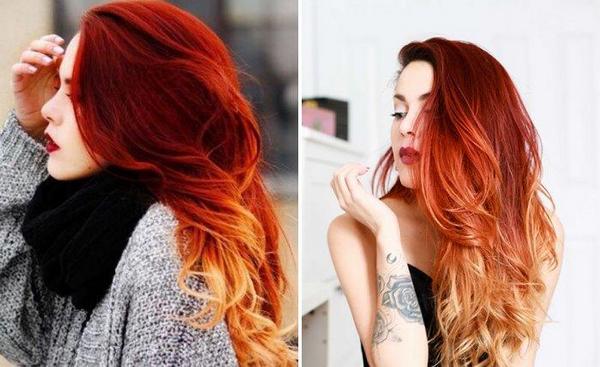
Shatush for long and short hair: differences in coloring
The technology of dyeing the shatush for long and short hair is no different, but it has some features:
- On short hair, you need to carefully distribute the pigment to create a smooth transition from a dark shade to a light shade.
- Due to the small distance between the roots and ends, the coloring can look brighter than on long hair.
- You should not make your own shatush for short hair. To do this, you need to know which strands to choose for applying the clarifier, so that as a result the French highlighting looks harmonious.
Short hair length that covers the neck is optimal for dyeing.
There are many haircuts to suit the length, but the shatush looks best with:
- square;
- elongated bob;
- asymmetrical haircut;
- laying in waves;
- straight hair with careless styling.
Long hair will allow you to perform shatush without any particular difficulties, so beginners are advised to master the technique at this length.
Instrument preparation
The set of tools for the crank is the same as for the standard highlighting.
For hair coloring you will need:
- comb;
- comb with fine teeth;
- paint brush;
- container for mixing paint;
- gloves;
- tinting paint;
- clarifier;
- oxidizer;
- hairpins for fixing strands.
Dishes for diluting the paint must be silicone or ceramic. Metal containers can oxidize the paint and result in unpredictable staining.
If the procedure is carried out at home without the participation of a colorist, special attention should be paid to the choice of paint in order to avoid the effect of yellowness and other undesirable reactions.
Strands that have already been dyed should not be covered with foil or a plastic cap. For high-quality clarification, free access to oxygen is required. Coloring using this technology is called "open highlighting".

 Don't miss the most popular column article: Fashionable bob bob haircut for short hair. Photo, front and back views.
Don't miss the most popular column article: Fashionable bob bob haircut for short hair. Photo, front and back views.Preparation for staining
The main stage in preparing hair for dyeing shatush is their treatment, because additional lightening of damaged and brittle hair will negatively affect their health and appearance.
2-3 weeks before the session, it is worth refraining from dyeing with ammonia dyes and carrying out any procedures involving the treatment of hair with products containing chemicals.
It is undesirable to do:
- keratin straightening;
- lamination;
- botox for hair.
It is not superfluous to do a haircut to remove split ends and give your hair a well-groomed look.
To restore the hair structure, you can take a course of salon procedures using ampoule products or make nourishing and moisturizing masks at home.
Step-by-step instructions for dyeing hair at home
Even a non-professional master can perform shatush at home. The main thing is to take care of the availability of all the necessary tools in advance and study in detail the course of the staining procedure.
In addition to the basic tools, you need to take care of the presence of two mirrors, which are placed parallel to each other. This will help you see the back of your head and apply the paint without assistance.
Stages of staining:
- Starting from the back of the head, it is necessary to comb randomly selected thin strands. If the hair is very long, the strands can be collected in a ponytail.
- Apply the clarifier to combed hair with intermittent movements.
- Leave the paint on for 20-40 minutes.
- Rinse the hair well from the clarifier and, if necessary, tint the strands.
Stages of dyeing hair with a fleece
The advantage of a brushed shatush is that it can be made without special skills. Even a novice hairdresser can handle the standard set of tools for coloring.
Instructions for making a shatush with a fleece:
- Pin the hair at the crown, freeing the back of the head.
- Select several strands 1-2 cm thick and comb them with a comb. The denser the fleece is, the less intense the bleaching will occur. This way you can vary the color depth.
- The coloring mixture is applied with light swing movements, not too thick. You need to start application from the roots, slightly brushing off the paint towards the tips. Hair roots do not need to be dyed.
- In a similar way, you need to comb and color the entire hair volume.
- The composition is washed off after 10-40 minutes, depending on the required color intensity. While rinsing, hair should be generously saturated with conditioner to help unravel the fleece.
- If desired, the strands can be tinted with the selected shade, and then apply a caring hair mask.
Step-by-step staining without fleece
Dyeing shatush without fleece is a more complex technique that only professional colorists practice.
Step by step instructions for staining:
- The master chooses several strands from the entire mass of hair in a chaotic manner and fixes them together.
- The lightening paint is applied by hand, with a brush or with a round comb, avoiding uniform staining of the strands.
- The colorist independently adjusts the intensity of lightening and rinses off the dye when the hair is sufficiently lightened.
- The strands are tinted with a shade in harmony with the natural hair color, and a nourishing mask is applied.
What to do with bangs?
When dyeing, the bangs are usually left in a natural shade. It is used to add a new accent to a hairstyle or to refresh a boring haircut.
Long hair is suitable for a thick straight or combed to the side bangs. It is in harmony with the lightened strands that frame the oval of the face and visually reduce it. This creates a feminine and elegant look.
Short haircuts are best combined with asymmetrical oblique bangs, which are sometimes also dyed using the shatush technique. This option looks strict and original, and is suitable for hair of any shade.
What is the difference between the shatush technique and highlighting, balayage and ombre?
Modern coloring techniques such as shatush, balayazh and ombre are considered to be varieties of highlighting. Despite their similarities, each method has its own characteristics.
Shatush coloring differs from other coloring methods in the way the paint is applied and the distribution of shades on the hair. The diagram in the photo below clearly demonstrates this difference.
Highlighting - lightening individual thin strands of hair using foil.Modern types of highlighting (Californian, Venetian) create the effect of sun glare on the hair. It is achieved through the use of 2-4 cool shades close to the natural hair color. This coloring technique is ideal for blonde girls.
Ombre involves a transition from a dark color at the roots to a lighter shade at the tips. The technique is performed by means of gradient hair coloring, in which one color is smoothly replaced by another. More than 8 shades of paint are used for this effect. Ombre is used not only for classic coloring in natural colors. It looks unusual with a color palette of paints.
Balayazh is a type of ombre in which the gradient is performed not with a sharp transition between contrasting shades, but using a soft palette of colors to create a smooth color change.
The shatush dyeing technique will add elegance and refresh any look, therefore it is considered universal and very popular among women of all ages. Photos of highlighting in different shades will help you make the right choice and choose the best option.
Article design: Olga Pankevich
Video about hair coloring using the shatush technique
Options for fashionable coloring of shatush:

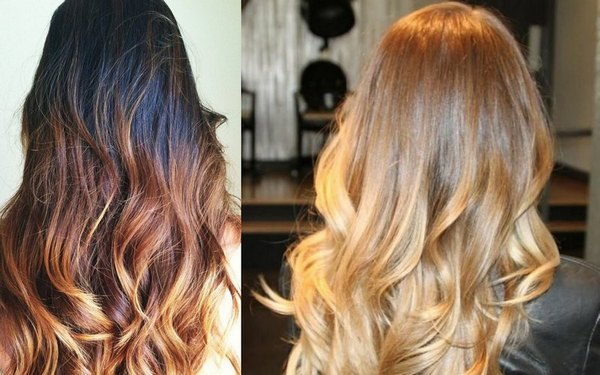
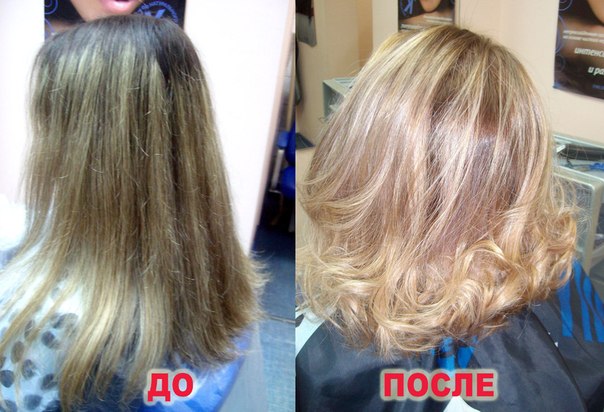
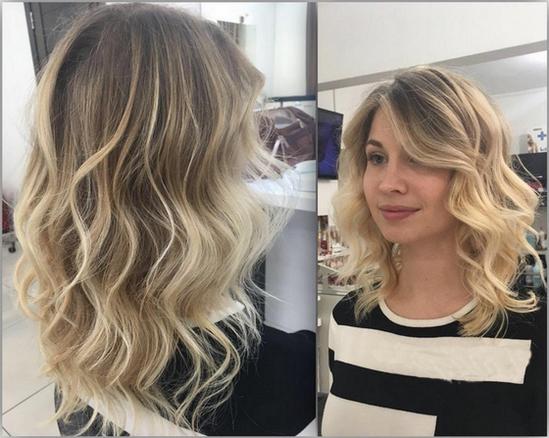
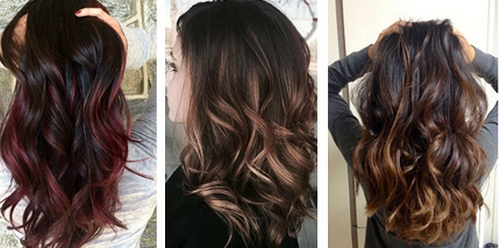
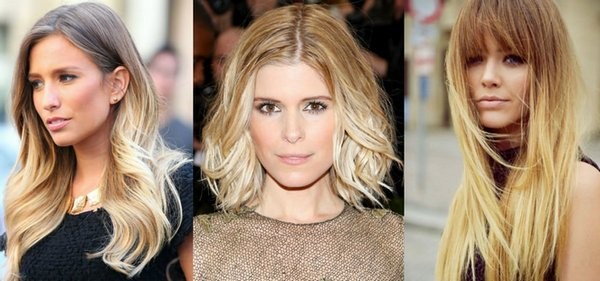
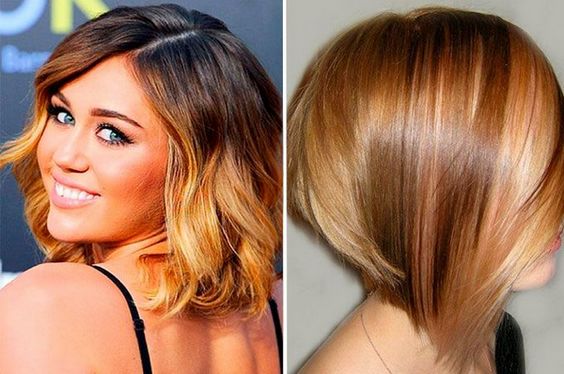
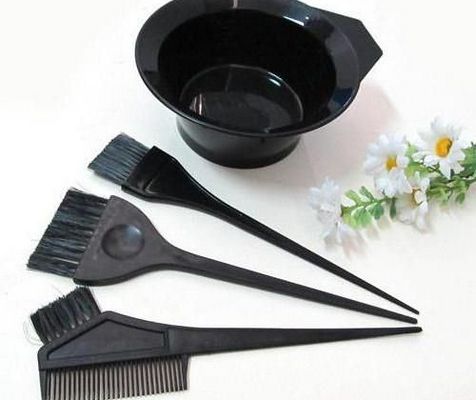
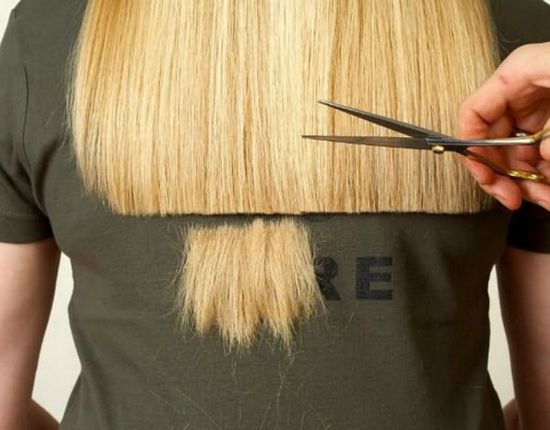
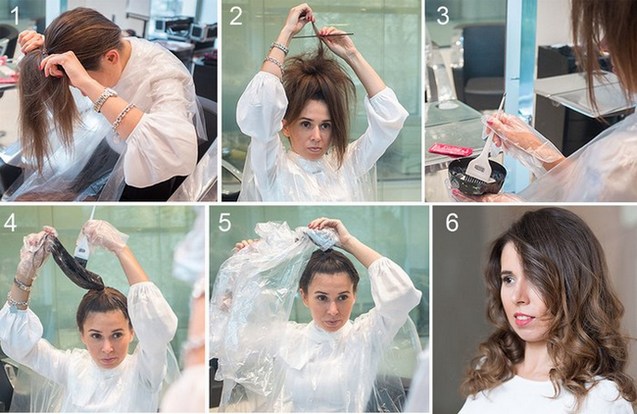
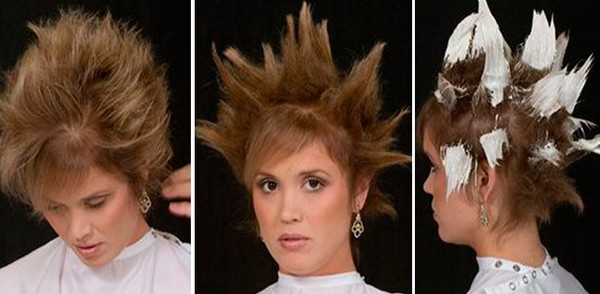
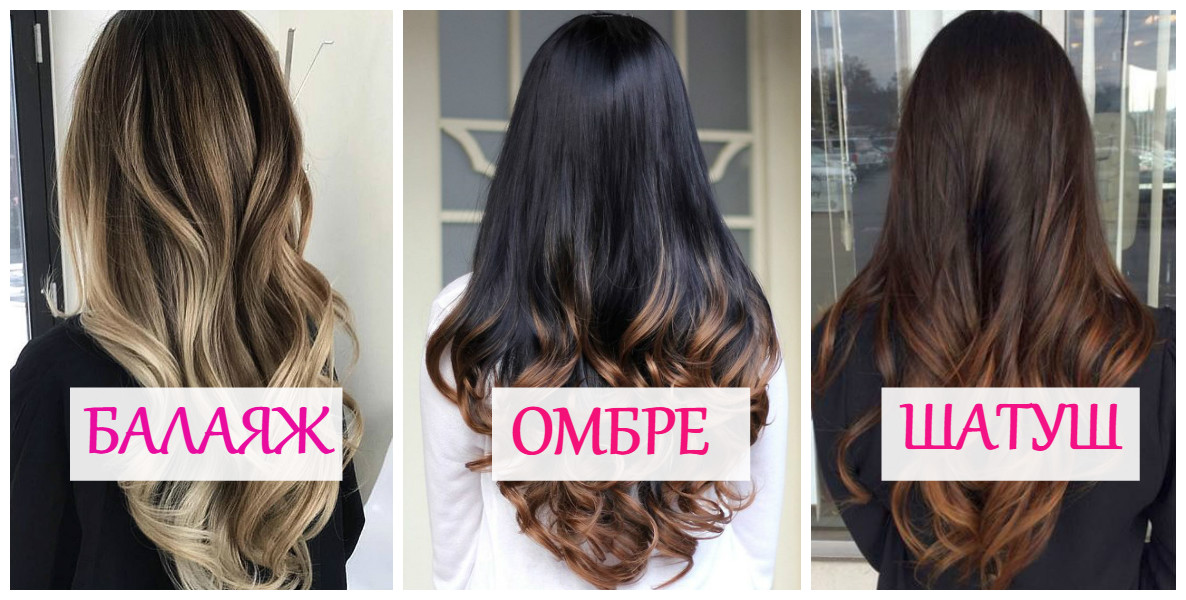
I really like the coloring of the shatush. I have medium length hair. I divide the curls into separate strands, comb them carefully and apply the coloring composition. It turns out almost as professional craftsmen do it.